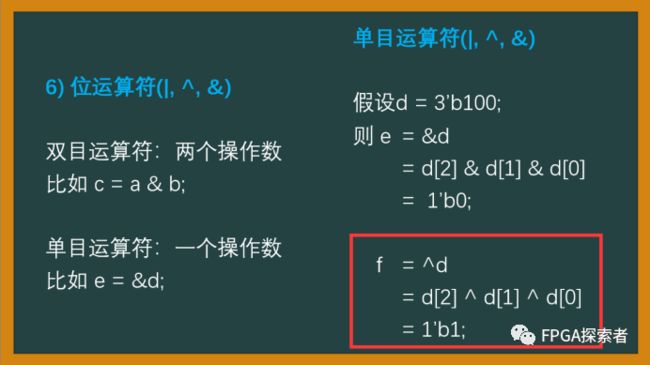FPGA面试题
https://download.csdn.net/download/m0_61687959/85892836?spm=1001.2014.3001.5503
入门篇1~24题
VL1 四选一多路器
解法一 三目运算符
使用assign连续赋值语句 + 三目运算符 ? :
`timescale 1ns/1ns
module mux4_1(
input [1:0]d1,d2,d3,d0,
input [1:0]sel,
output [1:0]mux_out
);
//*************code***********//
assign mux_out = (sel == 2'b00) ? d3 : ((sel == 2'b01) ? d2 : (sel == 2'b10) ? d1 : d0);
//*************code***********//
endmodule
解法二 case语句
使用always过程赋值语句 + case语句
`timescale 1ns/1ns
module mux4_1(
input [1:0]d1,d2,d3,d0,
input [1:0]sel,
output [1:0]mux_out
);
//*************code***********//
reg [1:0] mux_out_reg;
always @ (*)
begin
case(sel)
2'b00:mux_out_reg = d3;
2'b01:mux_out_reg = d2;
2'b10:mux_out_reg = d1;
2'b11:mux_out_reg = d0;
default : mux_out_reg = d0;
endcase
end
assign mux_out = mux_out_reg;
//*************code***********//
endmodule
相关扩展
题解 | Verilog刷题解析及对应笔试面试注意点【1-5】(涉及复位、有符号数问题等)
VL2 异步复位的串联T触发器
注意 T 触发器的概念,来 1 翻转,来 0 保持。
注意理解同步复位和异步复位。联发科数字IC简答题(9)——异步复位同步释放问题
`timescale 1ns/1ns
module Tff_2 (
input wire data, clk, rst,
output reg q
);
// 1. 复位
//2. T触发器,D触发器
//*************code***********//
reg q1;
always @ (posedge clk or negedge rst)
begin
if(!rst) begin
q1 <= 1'b0;
end
else begin
if( data )
q1 <= ~q1;
else
q1 <= q1;
end
end
always @ (posedge clk or negedge rst)
begin
if(!rst) begin
q <= 1'b0;
end
else begin
if( q1 )
q <= ~q;
else
q <= q;
end
end
//*************code***********//
endmodule
VL3 奇偶校验(实际上应该是奇偶检测)
实际上这里做的是奇偶检测,如果是奇数个 1 则结果为 1,使用单目运算符 ^ 即可。
`timescale 1ns/1ns
module odd_sel(
input [31:0] bus,
input sel,
output check
);
//*************code***********//
wire check_tmp;
// 单目运算符
assign check_tmp = ^bus;
// assign check = (sel == 1'b1) ? check_tmp : ~check_tmp;
reg check_reg;
always @ (*) begin
if(sel) begin
check_reg = check_tmp;
end
else begin
check_reg = ~check_tmp;
end
end
assign check = check_reg;
//*************code***********//
endmodule
VL4 移位运算与乘法
FSM 有限状态机思想,计数值就是状态。 注意在第一次获得数据的时候进行暂存。
`timescale 1ns/1ns
module multi_sel(
input [7:0]d ,
input clk,
input rst,
output reg input_grant,
output reg [10:0]out
);
//*************code***********//
reg [1:0] count; // 0 1 2 3
always @ (posedge clk or negedge rst)
begin
if(~rst) begin
count <= 2'b0;
end
else begin
count <= count + 1'b1;
end
end
// FSM 有限状态机思想,计数值就是状态
reg [7:0] d_reg;
always @ (posedge clk or negedge rst)
begin
if(~rst) begin
out <= 11'b0;
input_grant <= 1'b0;
d_reg <= 8'b0;
end
else begin
case( count )
2'b00 : begin
out <= d;
d_reg <= d;
input_grant <= 1'b1;
end
2'b01 : begin
out <= d_reg + {d_reg, 1'b0}; // *1 + *2
input_grant <= 1'b0;
end
2'b10 : begin
out <= d_reg + {d_reg, 1'b0} + {d_reg, 2'b0};
input_grant <= 1'b0;
end
2'b11 : begin
out <= {d_reg, 3'b0};
input_grant <= 1'b0;
end
default : begin
out <= d;
input_grant <= 1'b0;
end
endcase
end
end
//*************code***********//
endmodule
VL5 位拆分与运算
`timescale 1ns/1ns
module data_cal(
input clk,
input rst,
input [15:0]d,
input [1:0]sel,
output [4:0]out, // wire
output validout // wire
);
//*************code***********//
reg [15:0] d_reg;
wire [3:0] d0;
wire [3:0] d1;
wire [3:0] d2;
wire [3:0] d3;
assign d0 = d_reg[3:0];
assign d1 = d_reg[7:4];
assign d2 = d_reg[11:8];
assign d3 = d_reg[15:12];
reg [4:0] out_reg;
reg validout_reg;
always @ (posedge clk or negedge rst)
begin
if( ~rst ) begin
out_reg <= 5'b0;
validout_reg <= 1'b0;
d_reg <= 16'b0;
end
else begin
case( sel )
2'b00 : begin
d_reg <= d;
out_reg <= 5'b0;
validout_reg <= 1'b0;
end
2'b01 : begin
d_reg <= d_reg;
out_reg <= d_reg[3:0] + d_reg[7:4];// d0 + d1;
validout_reg <= 1'b1;
end
2'b10 : begin
d_reg <= d_reg;
out_reg <= d0 + d2;
validout_reg <= 1'b1;
end
2'b11 : begin
d_reg <= d_reg;
out_reg <= d0 + d3;
validout_reg <= 1'b1;
end
default : begin
out_reg <= 5'b0;
validout_reg <= 1'b0;
end
endcase
end
end
assign out = out_reg;
assign validout = validout_reg;
//*************code***********//
endmodule
VL6 多功能数据处理器
题解 | Verilog刷题解析及对应笔试面试注意点【6-9】(涉及==和===、for展开问题等)
`timescale 1ns/1ns
module data_select(
input clk,
input rst_n,
input signed[7:0]a,
input signed[7:0]b,
input [1:0]select,
output reg signed [8:0]c
);
always @ (posedge clk or negedge rst_n)
begin
if( ~rst_n ) begin
c <= 9'b0;
end
else begin
case ( select )
2'b00 : begin
c <= {a[7], a};
end
2'b01 : begin
c <= {b[7], b};
end
2'b10 : begin
c <= {a[7], a} + {b[7], b};
end
2'b11 : begin
c <= {a[7], a} - {b[7], b};
end
default : begin
c <= 9'b0;
end
endcase
end
end
endmodule
VL7 求两个数的差值
`timescale 1ns/1ns
module data_minus(
input clk,
input rst_n,
input [7:0]a,
input [7:0]b,
output reg [8:0]c
);
always @ (posedge clk or negedge rst_n)
begin
if( ~rst_n ) begin
c <= 8'b0;
end
else begin
if( a > b ) begin
c <= a - b;
end
else begin
c <= b - a;
end
end
end
endmodule
VL8 使用generate...for语句简化代码
分别给出generate...for和for的代码,可以对比不同点。
使用generate...for
`timescale 1ns/1ns
module gen_for_module(
input [7:0] data_in,
output [7:0] data_out
);
// 1. 必须使用 genvar 声明循环变量
// begin后面必须起个名字
genvar ii;
generate for(ii = 0; ii < 8; ii = ii+1)
begin : aaa_i
assign data_out[ii] = data_in[7-ii];
end
endgenerate
endmodule
使用for
`timescale 1ns/1ns
module gen_for_module(
input [7:0] data_in,
output [7:0] data_out
);
// 2. for
integer i;
reg [7:0] dout_reg;
always @ (*) begin
for(i = 0; i < 8; i = i+1) begin
dout_reg[i] = data_in[7-i];
end
end
assign data_out = dout_reg;
endmodule
VL9 使用子模块实现三输入数的大小比较
解法一 使用时序逻辑子模块
需要调用3个模块,这里很多同学可能疑惑为什么用3个而不是2个。
第一个模块:比较 T 时刻的 a 和 b,T+1 时刻出来 tmp1; 第二个模块:比较 T 时刻的 a 和 c,T+1 时刻出来 tmp2; 第三个模块:比较 T+1 时刻的 tmp1 和 tmp2,T+2 时刻出来 d;
如果只用2个子模块,那么 T 时刻比较 a 和 b 得到 tmp1,再比较 tmp1 和 c 的时候是 T+1 时刻的 c 和 T+1 时刻的 tmp1,而 tmp1 代表的是 T 时刻 a 和 b 的较小值,所以这时候比较的 T 时刻的 a、b 和 T+1 时刻的 c,显然不符合要求。
`timescale 1ns/1ns
module main_mod(
input clk,
input rst_n,
input [7:0]a,
input [7:0]b,
input [7:0]c,
output [7:0]d
);
// T 时刻的 a 和 b,T+1 时刻出来 tmp1
wire [7:0] tmp1; // a b 的最小值
child_mod U0(
.clk ( clk ),
.rst_n ( rst_n ),
.a ( a ),
.b ( b ),
.d ( tmp1 )
);
// T 时刻的 a 和 c,T+1 时刻出来 tmp2
wire [7:0] tmp2; // a c 的最小值
child_mod U1(
.clk ( clk ),
.rst_n ( rst_n ),
.a ( a ),
.b ( c ),
.d ( tmp2 )
);
// T+1 时刻的 tmp1 和 tmp2,T+2 时刻出来 d
child_mod U2(
.clk ( clk ),
.rst_n ( rst_n ),
.a ( tmp1 ),
.b ( tmp2 ),
.d ( d )
);
endmodule
// 子模块
module child_mod(
input clk,
input rst_n,
input [7:0]a,
input [7:0]b,
output [7:0]d
);
reg [7:0] d_reg;
always @ (posedge clk or negedge rst_n)
begin
if( ~rst_n ) begin
d_reg <= 8'b0;
end
else begin
if( a > b )
d_reg <= b;
else
d_reg <= a;
end
end
assign d = d_reg;
endmodule
解法二 使用组合逻辑子模块,需要打两拍
组合逻辑的子模块,就不存在时序逻辑中的延时问题,所以调用的时候用2个子模块就可以完成3个数的比较,为了符合时序波形的要求,多打一拍。
`timescale 1ns/1ns
module main_mod(
input clk,
input rst_n,
input [7:0]a,
input [7:0]b,
input [7:0]c,
output [7:0]d
);
wire [7:0] tmp1; // a b 的最小值
child_mod U0(
.a ( a ),
.b ( b ),
.d ( tmp1 )
);
wire [7:0] tmp2; // a c 的最小值
child_mod U1(
.a ( tmp1 ),
.b ( c ),
.d ( tmp2 )
);
reg [7:0] d_reg;
reg [7:0] d_reg2;
always @ (posedge clk or negedge rst_n)
begin
if( ~rst_n ) begin
d_reg <= 8'b0;
d_reg2 <= 8'b0;
end
else begin
d_reg <= tmp2;
d_reg2 <= d_reg;
end
end
assign d = d_reg2;
endmodule
module child_mod(
input [7:0]a,
input [7:0]b,
output [7:0]d
);
assign d = (a>b) ? b : a;
endmodule
VL10 使用函数实现数据大小端转换
题解 | Verilog刷题解析【10】function和task的使用、相关笔试题
`timescale 1ns/1ns
module function_mod(
input clk,
input rst_n,
input [3:0]a,
input [3:0]b,
output [3:0]c,
output [3:0]d
);
/*
function <返回值的类型或范围>函数名;
<端口说明语句>
<变量类型说明语句>
begin
<语句>
end
endfunction
*/
function [3:0] begin_end;
input [3:0] data_in;
begin
begin_end[0] = data_in[3];
begin_end[1] = data_in[2];
begin_end[2] = data_in[1];
begin_end[3] = data_in[0];
end
endfunction
assign c = begin_end(a);
assign d = begin_end(b);
endmodule
VL11 4位数值比较器电路
`timescale 1ns/1ns
module comparator_4(
input [3:0] A ,
input [3:0] B ,
output wire Y2 , //A>B
output wire Y1 , //A=B
output wire Y0 //AB[3]) | ((A[3]==B[3])&&(A[2]>B[2])) | ((A[3]==B[3])&&(A[2]==B[2])&&(A[1]>B[1])) | ((A[3]==B[3])&&(A[2]==B[2])&&(A[1]==B[1])&&(A[0]>B[0]));
assign Y1 = (A[3]==B[3])&&(A[2]==B[2])&&(A[1]==B[1])&&(A[0]==B[0]);
assign Y0 = (~Y2) & (~Y1);
endmodule
VL12 4bit超前进位加法器电路
`timescale 1ns/1ns
module lca_4(
input [3:0] A_in ,
input [3:0] B_in ,
input C_1 ,
output wire CO ,
output wire [3:0] S
);
wire [3:0] G;
wire [3:0] P;
assign G[0] = A_in[0] & B_in[0];
assign G[1] = A_in[1] & B_in[1];
assign G[2] = A_in[2] & B_in[2];
assign G[3] = A_in[3] & B_in[3];
assign P[0] = A_in[0] ^ B_in[0];
assign P[1] = A_in[1] ^ B_in[1];
assign P[2] = A_in[2] ^ B_in[2];
assign P[3] = A_in[3] ^ B_in[3];
wire [3:0] C;
assign S[0] = P[0] ^ C_1;
assign S[1] = P[1] ^ C[0];
assign S[2] = P[2] ^ C[1];
assign S[3] = P[3] ^ C[2];
assign CO = C[3];
assign C[0] = G[0] | P[0]&C_1;
assign C[1] = G[1] | P[1]&C[0];
assign C[2] = G[2] | P[2]&C[1];
assign C[3] = G[3] | P[3]&C[2];
endmodule
13~20不建议做了,没有太大意义,这里只给出13~16的代码。
VL13 优先编码器电路1
`timescale 1ns/1ns
module encoder_0(
input [8:0] I_n ,
output reg [3:0] Y_n
);
always @ (*)
begin
casex(I_n)
9'b1_1111_1111 : Y_n = 4'b1111;
9'b0_xxxx_xxxx : Y_n = 4'b0110;
9'b1_0xxx_xxxx : Y_n = 4'b0111;
9'b1_10xx_xxxx : Y_n = 4'b1000;
9'b1_110_xxxx : Y_n = 4'b1001;
9'b1_1110_xxxx : Y_n = 4'b1010;
9'b1_1111_0xxx : Y_n = 4'b1011;
9'b1_1111_10xx : Y_n = 4'b1100;
9'b1_1111_110x : Y_n = 4'b1101;
9'b1_1111_1110 : Y_n = 4'b1110;
default : Y_n = 4'b1111;
endcase
end
endmodule
VL14 用优先编码器1实现键盘编码电路
`timescale 1ns/1ns
module encoder_0(
input [8:0] I_n ,
output reg [3:0] Y_n
);
always @(*)
begin
casex(I_n)
9'b111111111 : Y_n = 4'b1111;
9'b0xxxxxxxx : Y_n = 4'b0110;
9'b10xxxxxxx : Y_n = 4'b0111;
9'b110xxxxxx : Y_n = 4'b1000;
9'b1110xxxxx : Y_n = 4'b1001;
9'b11110xxxx : Y_n = 4'b1010;
9'b111110xxx : Y_n = 4'b1011;
9'b1111110xx : Y_n = 4'b1100;
9'b11111110x : Y_n = 4'b1101;
9'b111111110 : Y_n = 4'b1110;
default : Y_n = 4'b1111;
endcase
end
endmodule
module key_encoder(
input [9:0] S_n ,
output wire[3:0] L ,
output wire GS
);
wire [3:0] LL;
encoder_0 U0(
.I_n( S_n[9:1] ) ,
.Y_n( LL )
);
assign L = ~LL;
assign GS = ((LL == 4'b1111) && (S_n[0] == 1)) ? 0 : 1;
endmodule
VL15 优先编码器2——8线-3线优先编码器
`timescale 1ns/1ns
module encoder_83(
input [7:0] I ,
input EI ,
output wire [2:0] Y ,
output wire GS ,
output wire EO
);
reg [2:0] Y_Reg;
reg GS_Reg;
reg EO_Reg;
always @ (*)
begin
if( EI == 1'b0 ) begin
Y_Reg = 3'b0;
GS_Reg = 1'b0;
EO_Reg = 1'b0;
end
else begin
casex(I)
8'b0000_0000 : begin
Y_Reg = 3'b0;
GS_Reg = 1'b0;
EO_Reg = 1'b1;
end
8'b1xxx_xxxx : begin
Y_Reg = 3'b111;
GS_Reg = 1'b1;
EO_Reg = 1'b0;
end
8'b01xx_xxxx : begin
Y_Reg = 3'b110;
GS_Reg = 1'b1;
EO_Reg = 1'b0;
end
8'b001x_xxxx : begin
Y_Reg = 3'b101;
GS_Reg = 1'b1;
EO_Reg = 1'b0;
end
8'b0001_xxxx : begin
Y_Reg = 3'b100;
GS_Reg = 1'b1;
EO_Reg = 1'b0;
end
8'b0000_1xxx : begin
Y_Reg = 3'b011;
GS_Reg = 1'b1;
EO_Reg = 1'b0;
end
8'b0000_01xx : begin
Y_Reg = 3'b010;
GS_Reg = 1'b1;
EO_Reg = 1'b0;
end
8'b0000_001x : begin
Y_Reg = 3'b001;
GS_Reg = 1'b1;
EO_Reg = 1'b0;
end
8'b0000_0001 : begin
Y_Reg = 3'b000;
GS_Reg = 1'b1;
EO_Reg = 1'b0;
end
endcase
end
end
assign Y = Y_Reg;
assign GS = GS_Reg;
assign EO = EO_Reg;
endmodule
VL16 使用8线-3线优先编码器实现16线-4线优先编码器
`timescale 1ns/1ns
module encoder_83(
input [7:0] I ,
input EI ,
output wire [2:0] Y ,
output wire GS ,
output wire EO
);
assign Y[2] = EI & (I[7] | I[6] | I[5] | I[4]);
assign Y[1] = EI & (I[7] | I[6] | ~I[5]&~I[4]&I[3] | ~I[5]&~I[4]&I[2]);
assign Y[0] = EI & (I[7] | ~I[6]&I[5] | ~I[6]&~I[4]&I[3] | ~I[6]&~I[4]&~I[2]&I[1]);
assign EO = EI&~I[7]&~I[6]&~I[5]&~I[4]&~I[3]&~I[2]&~I[1]&~I[0];
assign GS = EI&(I[7] | I[6] | I[5] | I[4] | I[3] | I[2] | I[1] | I[0]);
//assign GS = EI&(| I);
endmodule
module encoder_164(
input [15:0] A ,
input EI ,
output wire [3:0] L ,
output wire GS ,
output wire EO
);
wire [2:0] Y_1;
wire GS_1;
wire EO_1;
encoder_83 U0(
.I(A[15:8]) ,
.EI(EI) ,
.Y(Y_1) ,
.GS(GS_1) ,
.EO(EO_1)
);
wire [2:0] Y_0;
wire GS_0;
wire EO_0;
encoder_83 U1(
.I(A[7:0]) ,
.EI(EO_1) ,
.Y(Y_0) ,
.GS(GS_0) ,
.EO(EO_0)
);
assign GS = GS_1 | GS_0;
assign EO = EO_0;
assign L[3] = GS_1;
assign L[2] = Y_1[2] | Y_0[2];
assign L[1] = Y_1[1] | Y_0[1];
assign L[0] = Y_1[0] | Y_0[0];
endmodule
VL17~20 不建议做
VL21 根据状态转移表实现时序电路
FSM有限状态机问题,两段式。
-
摩尔型:输出只与当前状态有关;
-
米利型;输出不仅与当前状态有关,还有当前输入有关;
`timescale 1ns/1ns
module seq_circuit(
input A ,
input clk ,
input rst_n,
output wire Y
);
reg [1:0] curr_state;
reg [1:0] next_state;
// one step
always @ (posedge clk or negedge rst_n)
begin
if( ~rst_n ) begin
curr_state <= 2'b00;
next_state <= 2'b00;
end
else begin
curr_state <= next_state;
end
end
// two step
always @ (*)
begin
case(curr_state)
2'b00 : next_state = (A == 1'b1) ? 2'b11 : 2'b01;
2'b01 : next_state = (A == 1'b1) ? 2'b00 : 2'b10;
2'b10 : next_state = (A == 1'b1) ? 2'b01 : 2'b11;
2'b11 : next_state = (A == 1'b1) ? 2'b10 : 2'b00;
default : next_state = 2'b00;
endcase
end
assign Y = (curr_state == 2'b11) ? 1 : 0;
endmodule
VL22 使用状态转移图实现时序电路
`timescale 1ns/1ns
module seq_circuit(
input C ,
input clk ,
input rst_n,
output wire Y
);
reg [1:0] curr_state;
reg [1:0] next_state;
// one step
always @ (posedge clk or negedge rst_n)
begin
if( ~rst_n ) begin
curr_state <= 2'b00;
next_state <= 2'b00;
end
else begin
curr_state <= next_state;
end
end
// two step
always @ (*)
begin
case(curr_state)
2'b00 : next_state = (C == 1'b1) ? 2'b01 : 2'b00;
2'b01 : next_state = (C == 1'b1) ? 2'b01 : 2'b11;
2'b10 : next_state = (C == 1'b1) ? 2'b10 : 2'b00;
2'b11 : next_state = (C == 1'b1) ? 2'b10 : 2'b11;
default : next_state = 2'b00;
endcase
end
assign Y = ((curr_state == 2'b11) | ((curr_state == 2'b10)&&(C == 1'b1)) )? 1 : 0;
endmodule
VL23 ROM的简单实现
`timescale 1ns/1ns
module rom(
input clk,
input rst_n,
input [7:0]addr,
output [3:0]data
);
reg [3:0] romreg[7:0];
integer i;
always @ (posedge clk or negedge rst_n)
begin
if( ~rst_n ) begin
romreg[0] <= 4'd0;
romreg[1] <= 4'd2;
romreg[2] <= 4'd4;
romreg[3] <= 4'd6;
romreg[4] <= 4'd8;
romreg[5] <= 4'd10;
romreg[6] <= 4'd12;
romreg[7] <= 4'd14;
end
else begin
// romreg[0] <= romreg[0];
// ...
// romreg[7] <= romreg[7];
for(i = 0; i < 8; i = i+1) begin : rom_i
romreg[i] <= romreg[i];
end
end
end
assign data = romreg[addr];
endmodule
VL24 边沿检测
`timescale 1ns/1ns
module edge_detect(
input clk,
input rst_n,
input a,
output reg rise,
output reg down
);
reg a1;
always @ (posedge clk or negedge rst_n)
begin
if( ~rst_n ) begin
a1 <= 1'b0;
rise <= 1'b0;
down <= 1'b0;
end
else begin
a1 <= a;
if(a & ~a1)
rise <= 1'b1;
else
rise <= 1'b0;
if(~a & a1)
down <= 1'b1;
else
down <= 1'b0;
end
end
endmodule









